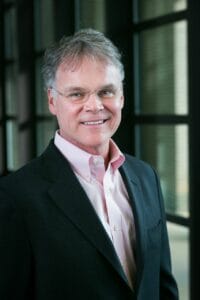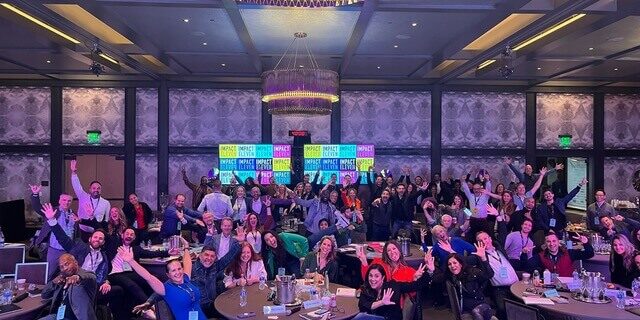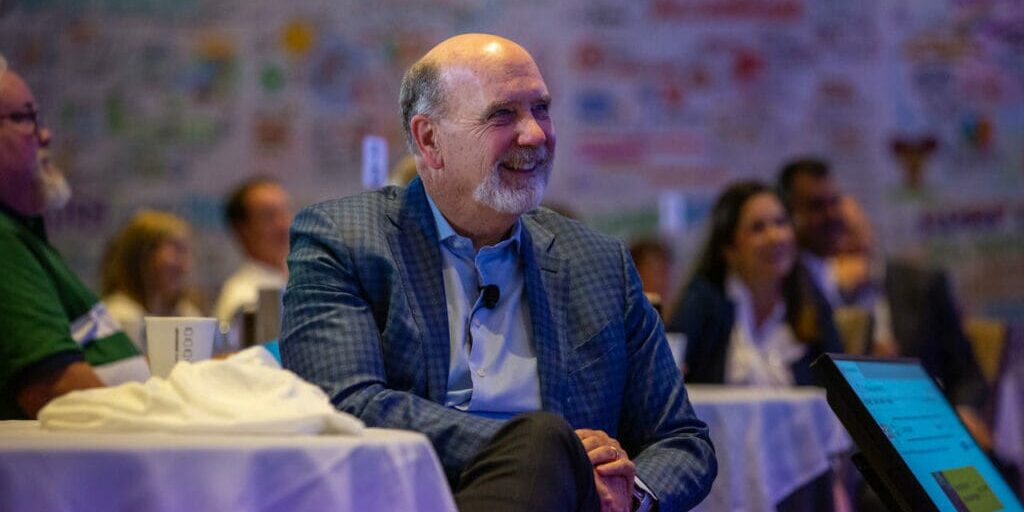 I could listen to Bill Madison, the CEO, Insurance, of LexisNexis Risk Solutions, talk about leadership all day. He truly understands that culture is the key to building a business prepared to win into the future, and he is boldly challenging the status quo in the insurance industry.
I could listen to Bill Madison, the CEO, Insurance, of LexisNexis Risk Solutions, talk about leadership all day. He truly understands that culture is the key to building a business prepared to win into the future, and he is boldly challenging the status quo in the insurance industry.
Purpose-driven, people-focused leadership drives performance and profitability. Put the customer at the center of everything you do. Listen. Learn. Grow together. Leadership is about service, sacrifice, humility, taking care of people and helping them realize their full potential.
This was his message in California, at the 2017 Customer Advisory Meeting (CAM). It’s why I can’t wait to join Bill again this March in London for his UK 2018 CAM Meeting.
Before then, I wanted to share some of his insights on leadership, purpose and disruption with you in this deep dive Q&A. It’s a bit longer than most of my usual blog posts, but it’s worth the investment if you want to better understand how to lead in the service of others. Enjoy!
How would you describe your philosophy on leadership?
In a word? Transparency. We can’t afford hidden agendas. More importantly, we don’t have time for them.
Instead, I focus on creating a common cause or a purpose. We don’t have a mission statement. We don’t have a vision statement. We have our purpose. That’s where it all starts from. Our purpose is our guiding light.
If you are truly behind your purpose, you will never have to worry about your numbers.
What is your purpose?
We are innovators, passionate about challenging the status quo and improving outcomes.
What’s just as important is what we don’t say. The management team and I didn’t want the word “insurance” to be in our purpose statement. We wanted to really have something meaningful that was true to the core of what we’re really all about. True to our culture.
We have to innovate. We have to be creative. We’re challenging the status quo. A lot of what we do pushes our customers to challenge their own status quo. We bring solutions into the market that require our customers to think differently. Those that do put themselves in a much better position within the markets that they’re serving. We’re constantly looking for improvement — for us and for them.
What does it take to inspire that mindset across your team?
It starts with my actions as the leader. Personally, I want to be a little bit better today than I was yesterday. I’m not always successful, but at least I strive for it. I realize that I’ve got a huge microscope on top of my head, whether I like it or not. And I’ve got to live and breathe what I’m preaching and what I expect out of the associates. I’m looking for them to improve, but I’ve got to look at myself first.
I can’t say I always thought that way. It was probably about five or six years ago, I had someone comment on what I was wearing for the day. All of a sudden, it was like a lightning bolt hit me: “Oh my god, people are looking at what I’m wearing?!”
But how you look, how you act, what’s coming out of your mouth, how those conversations are taking place are what people hang on to. It all matters. It’s part of the responsibility of being a leader.
In addition to being mindful of my own actions, I make an effort to communicate a lot. I have a weekly report that goes out that summarizes activities across the business. We have three all-hands meeting events each year. I have newsletters that go out. So we’re constantly pushing out this intelligence as well as what’s happening across the business.
You place a lot of emphasis on consistency, don’t you?
Oh, definitely. My words may be slightly different, but the message is massively consistent.
Sometimes I get to a point where I’m thinking, “Oh god, everybody’s got to be massively bored with it.” And invariably, I will have someone walk up to me and say, “Oh Bill, now I get it.” The light bulb went off for them.
I have to keep in mind that we’re hiring a lot of new people. Even if I’ve said something a million times, some are hearing these messages for the first time.
What do you see as the biggest change underway right now in the insurance industry?
I think it’s the further use of data and analytics. I mean, it’s been core to what the insurance industry has done for a couple of decades now. But now they are really changing their business processes. They’re looking at it as a way to be more efficient. They’re looking at data and analytics to make more informed decisions even more consistently without human intervention. I think we’re going to see this massive change, and it goes hand in hand with the technology changes in our vehicles and homes, how all this becomes interconnected to give more and more intelligence to the insurance industry so they have a richer understanding of risk.
Now we’re starting to see data being captured a lot more rapidly and becoming available to more companies. Then the question becomes, how can the industry manage this information at the pace it’s being developed? That’s where we come in. We provide the platforms that normalize disparate data assets into a way our customers can ingest it. We’re talking a lot about executing today with tomorrow in mind. We’re constantly thinking about the future.
You’ve talked a lot about the value of pursuing a holistic approach in insurance. Talk about that a little.
This is an idea that we started to put out in the marketplace five or six years ago, and it’s really starting to resonant in a big way. We like to talk about the insurance continuum. The lifetime relationship you as an insurer have with the consumer, from marketing to point of claim. A lot of people think of that as a linear process where you’re hopping from one event to another within that insurance transaction, but it’s really a loop of knowledge.
Most insurance companies are organized to fit that linear model. They have a quoting group, they have an underwriting group, they have a retention group, they have a compliance team, they have a claims organization, and so on. They rarely share intelligence across that relationship they have with the consumer.
We’re trying to break down these barriers within the insurance carriers. We talk a lot about how every time there’s a touch point with a consumer, that’s a touch point of knowledge. How do we infuse that touchpoint with the other things we know about that consumer?
Here’s an example: Let’s say a customer has an auto accident, and you get them a check within three to four days. You went above and beyond as their insurance carrier. You’ve got a happy customer.
What else can you connect with that happiness? We can alert you that your customer also owns a home, giving you a reason to reach out again and see if they’d be interested in homeowners coverage with you.
Then that whole conversation starts all over again. You’re sharing knowledge and bringing more intelligence back into the relationship.
We have a platform called LexisNexis® Active Insights. So if certain things are happening within your household that are of relevance to the insurance carrier, we can proactively push that back to the insurance carrier so they have more in depth knowledge about you as well. You now have a kid of age that has their driver’s license. Is that something that the insurance carrier would like to know? And should that new driver be listed on the policy? Now you have an event that you can proactively go back to the household, verify, and then offer services and solutions to be sure you as a policyholder are covered when you most need it.
You began your career as a customer sales representative. How have those experiences shaped your approach to leadership, now that you’re a CEO?
Starting off in sales gave me an appreciation for what makes business work. It’s the customers. It’s identifying a market need and creating a solution that addresses that need. That’s been core to me personally, but it’s also core to our business and how we execute on our solutions. It’s core to how we’re helping our customers drive their business agendas and achieve their objectives.
Being exposed to that side of the business at a young age really helped me appreciate that. It’s not about how we’re always selling; it’s about how we’re always listening.


![[RYAN] Featured_Why Human-Centered Leadership Is the Future of Growth [RYAN] Featured_Why Human-Centered Leadership Is the Future of Growth](https://ryanestis.com/wp-content/uploads/bb-plugin/cache/RYAN-Featured_Why-Human-Centered-Leadership-Is-the-Future-of-Growth-1024x538-panorama-78e9dc1762c564216c0e9d2780c005b1-.jpg)







